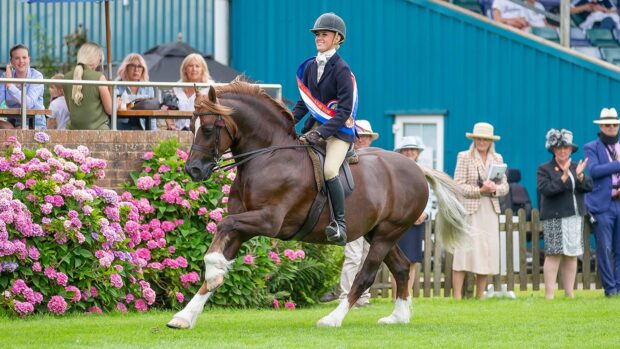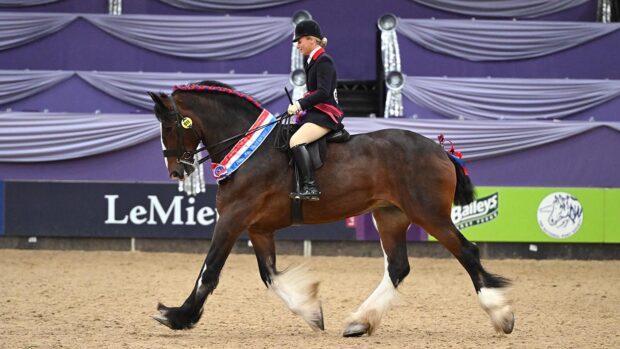What does it take to successfully show ponies in the ring?
If anyone knows it is Sarah Emmerson, a former science teacher who swapped playgrounds for stables 10 years ago and has gone on to achieve great things — including three championship titles at Horse of the Year Show 2014 and more than 170 wins at BSPS winter and summer championships that same year.
This week’s guest editor Jayne Ross was keen to interview Sarah and her parents, Peter and Claire, because they are proof that even without a showing background you can make it at the top.
Both of Sarah’s parents hunted and Claire was a Pony Club member, but they are the first generation of Emmerson to make a living from producing horses. Here are seven secrets behind their success:
1. Short cuts are a no-no, especially when breaking in ponies
“I’m horrified when people say ‘oh, I did it in a couple of weeks’,” says Peter. “Our ponies are lunged and long reined, and we don’t put anyone on their backs until they will turn left and right and halt, plus accept the bit.”
2. Ponies are not tied up inside stables and most stables don’t have a tie ring
“I wouldn’t stand a pony in tack,” says Sarah. “I’d be scared stiff it might go over and injure itself. We don’t have the staff to watch them every minute, so there’s no tie rings in stables because it’s a risk I’d rather not take.”
3. The Emmersons use an Abbott Davies balancing rein in training
“It helps create an outline, but you need a good rider on board for it to do any proper good,” explains Peter. “If the animal isn’t ridden from behind, you’re back to square one the minute you take it off.”
4. Every lead-rein pony is ridden off the lead at home
“They learn to go in their own outline and natural rhythm,” says Sarah. “Then before a show I’ll practice running up and down the road with them. If they’re constantly kept on a circle they develop a shortened stride and a false way of going.”
5. Ponies are regularly hacked out
“We’re spoilt here [North Yorkshire] with quiet lanes and plenty of off-road hacking plus hills a short ride away,” says Sarah. “We also have permission from farmers to ride around local fields.”
6. Each pony has its own show box
The box is permanently packed with that equine’s bandages, show rugs and other essential gear. It saves time and avoids any last minute panicking.
“All we have to do is put the box outside the pony’s door the night before,” says Peter. “We like to be at a show by 6am which generally means starting at 2am, and the last thing we want is to be worrying whether we’ve got everything.”
7. At a buzzy venue, each child rides their pony in the warm-up the day before their class, wherever possible
“At HOYS our kids ride in the evening warm-up the day before their class,” adds Sarah. “It gets them both used to the atmosphere and gives them a different view from the side of the ring. They can visualise the grandstands and where they will do their individual shows. It can come as a shock to them otherwise.”
H&H guest editor Jayne Ross will be online today (Friday 20 March) answering questions about showing and discussing the features she has commissioned between 12.30pm and 1.30pm. Sign up for a reminder at www.horseandhound.co.uk/jayne-ross-web-chat or send your questions to aimi.clark@timeinc.com





